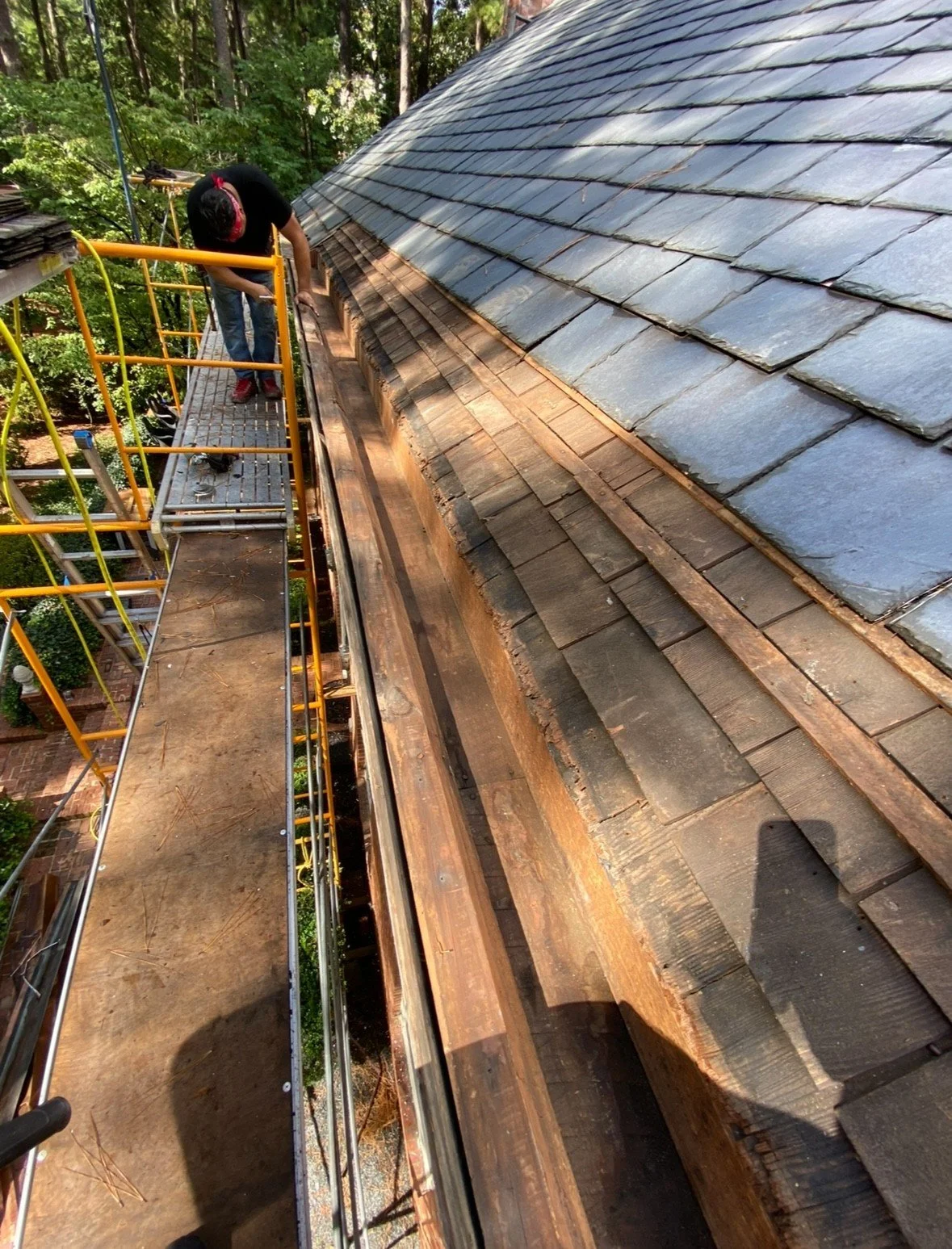Built-in Gutter Restoration
BUILT-IN GUTTER RESTORATION
Built-in gutter restoration involves the careful inspection, repair, and maintenance of gutter systems that are integrated within a building's architecture, typically hidden within the roof structure. These gutters, often found in historic homes, require specialized attention due to their complexity and the potential for water damage to both the gutters and the building's structural components.
Repairing built-in gutters with a 16 oz copper inlay involves several meticulous steps to ensure both functionality and preservation of the structure's historical integrity.
Remove Existing Gutter Lining:
Carefully extract the current gutter lining and a section of the roof covering above the gutter to expose the wooden framework.
Inspect and Repair Wood Framework:
Examine the exposed wood for signs of rot or damage.
Replace or repair any compromised sections to restore structural integrity.
Install Protective Layers:
Apply an elastomeric ice-and-water shield to the bottom of the gutter (optional, based on specific requirements).
Lay down building felt over the protective layer.
Place a slip-sheet of rosin paper on top of the building felt to create a smooth surface.
Inlay with 16 oz Copper:
Install a 16 oz copper lining over the prepared layers, ensuring proper soldering to prevent leaks.
Repair Roof Decking Above Gutter:
On the roof deck above the gutter, install two feet of elastomeric ice-and-water shield (or copper flashing) beneath the roofing material to enhance water resistance.
Restore Architectural Features:
Repair or replace cornice moldings, brackets, and other architectural woodwork as needed to maintain the building's historical character.
This comprehensive approach using traditional materials and techniques to effectively restore and preserve built-in gutters, ensuring their functionality and extending their lifespan. Restoring these gutters is often intricate and can be costly, but when properly executed, a well-maintained system can last 60 to 100 years or more, depending on the materials used. It's advisable to consult with preservation architects or roofing professionals experienced in working with historic structures to ensure that the restoration preserves the building's integrity and historical value.

